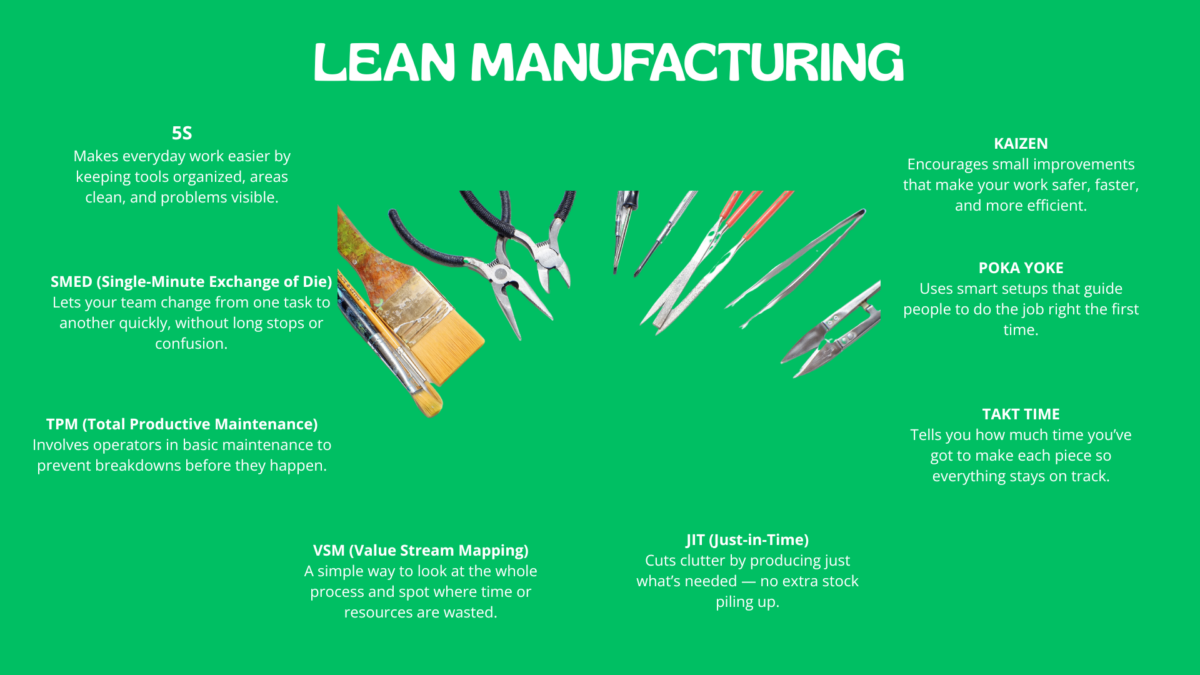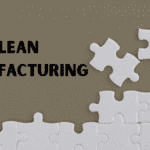
Spis treści
In a world where customer expectations evolve rapidly and global competition intensifies, businesses must adopt more innovative strategies to stay relevant. One of the most effective combinations to emerge from the world of industrial innovation is lean production, also known as just-in-time (JIT). Rooted in the Toyota Production System, this methodology was pioneered in the automotive industry, where principles such as waste reduction and standardization were first introduced. The origins of lean production, specifically just-in-time, are deeply rooted in Japanese manufacturing, particularly through the innovations of Toyota, which emphasized efficiency and process improvement. This methodology enables manufacturers to align operations with customer demand, reduce manufacturing waste, and deliver value with precision.
This article explores the concept of lean production, utilizing just-in-time practices, and explains how companies can transform their production processes, reduce costs, and meet the evolving needs of the modern market. These practices, which originated in Japan, have since spread to developed countries, including the US, UK, and Australia, shaping manufacturing industries worldwide.
What Is Lean Production Just-in-Time?
Lean production focuses on eliminating waste, streamlining operations, and maximizing customer value. When paired with just-in-time (JIT) manufacturing—a system in which materials and products are delivered exactly when needed—businesses can significantly enhance their manufacturing efficiency. JIT adopts a business-centric approach focused on efficiency and cost reduction.
The lean production just-in-time model ensures that inventory is minimized, workflow is continuous, and every process step adds value. It’s a shift from traditional mass production to a responsive, customer-centric approach. Lean manufacturing moves beyond concentrating solely on cost reduction, instead prioritizing customer value through continuous process improvements.
Origins in the Toyota Production System
The foundation of this strategy comes from the Toyota Production System, a pioneering model developed by the Toyota Motor Corporation in post-war Japan. Toyota’s approach to jit manufacturing—also known as jit production—revolutionized the global manufacturing landscape by focusing on producing items precisely when needed.
- Reducing excess inventory
- Improving production line flow
- Enhancing quality control
- Lowering overall carrying costs
A key benefit of the Toyota Production System is the reduction of inventory, which improves efficiency, quality, and productivity. The system is also known for dramatically lowering inventory levels and carrying costs.
This system evolved to incorporate lean manufacturing principles and continues to influence manufacturing processes worldwide.
Understanding the Production Process
In lean manufacturing, the production process is at the heart of operational excellence. It encompasses every step involved in transforming raw materials into finished products, with a focus on efficiency and adaptability. A lean production system, such as the renowned Toyota Production System, is designed to ensure that each stage of the production process adds value and aligns closely with customer demand.
By applying just-in-time manufacturing principles, companies can synchronize their production schedules to produce goods only when needed, in the exact quantities required. This approach minimizes idle time, reduces the risk of overproduction, and optimizes resource use. Lean manufacturing companies that adopt these lean principles can streamline their operations, eliminate unnecessary steps, and respond quickly to changes in customer requirements. Ultimately, understanding and refining the production process is essential for any organization aiming to implement a lean production system and achieve maximum efficiency.
Core Principles of JIT in Lean Production

The synergy between lean thinking and just-in-time practices is built on several foundational principles:
3.4 Waste Reduction
Both JIT and lean manufacturing aim to eliminate waste, which is defined as any activity that does not add value to the customer. This includes excess inventory, unnecessary processes, and other non-value-adding activities. By focusing on waste reduction, organizations can improve efficiency and responsiveness in their production processes.
1. Pull System
Production is based on actual customer demand, not forecasts. This avoids overproduction and excess inventory.
2. Flow Efficiency
Materials, tasks, and information move seamlessly through the production process, reducing throughput time and delays.
3. Standardization and Process Control
Consistent operations ensure quality and minimize variation across the manufacturing process.
4. Waste Reduction
Lean focuses on eliminating the eight wastes: overproduction, waiting, transport, over-processing, inventory, motion, defects, and unused talent.
Inventory Management Strategies in JIT
Effective inventory management is a cornerstone of just-in-time manufacturing and a key differentiator for lean manufacturing companies. In a JIT system, the goal is to keep inventory levels as low as possible, ensuring that raw materials and components arrive precisely when they are needed for production. This strategy relies on a well-coordinated supply chain and strong supplier relationships, enabling companies to respond swiftly to customer demand without building excess inventory.
One of the most effective inventory management strategies in JIT is the pull system, in which actual customer orders, rather than forecasts, trigger production. This approach enables companies to avoid overstocking, reduce carrying costs, and maintain a lean and agile operation. By continuously monitoring inventory levels and collaborating closely with supply chain partners, organizations can optimize their inventory management, minimize waste, and support the overall goals of time manufacturing and lean production.
Quality Control Measures in Lean Production
Quality control is an essential component of any lean production system, ensuring that every product meets customer expectations and is free from defects. In lean production, quality control is not a separate step; instead, it is integrated throughout the entire production process. Lean employees collaborate across departments and with customer service groups to identify potential issues early and implement solutions quickly, fostering a culture of continuous improvement.
Lean thinking and just-in-time management encourage proactive problem-solving and empower employees to take ownership of quality at every stage of the process. Advanced manufacturing equipment and automation technologies further support these efforts by providing real-time data and reducing the likelihood of human error. By integrating quality control into the core of the production process, lean manufacturing companies can consistently deliver high-quality products, minimize waste, and improve customer satisfaction, making quality a crucial component of their competitive advantage.
Advantages of Lean Production Just-in-Time
Implementing lean production just-in-time offers measurable benefits:
- Lower inventory levels and improved inventory management by managing inventory in smaller quantities to reduce costs and improve efficiency
- Reduced carrying costs and better cash flow, with lower costs as a key benefit of JIT
- Faster lead times and response to fluctuating market needs
- Enhanced supplier relationships and supply chain coordination, focusing on optimizing the entire process rather than just reducing the supplier’s costs
- Higher quality through built-in process control and quality assurance
- Empowered shop floor workers and lean employees collaborate more effectively
- Real-time visibility and improved decision-making
All these advantages ultimately aim to deliver a satisfied customer.
🎓 Want to learn how to implement lean production and JIT in your organization? Enroll in our Lean Management course today. Gain practical experience, certification, and lifetime access to all materials.
Just-in-Time vs. Just-in-Case: Understanding the Core Difference
Unlike the “just-in-case” approach that relies on stockpiling raw materials, the just-in-time management model ensures that inputs arrive only as needed. This reduces carrying costs, increases space efficiency, and improves cash flow.
While just-in-case offers security in uncertain environments, JIT demands tight material management, fast supply of materials, quick capabilities, and trusted supplier relationships. To support JIT practices, suppliers must be able to deliver materials with limited advance notice, which is a key challenge in supply chain management and procurement.
How JIT and Lean Impact the Supply Chain
Both lean and JIT profoundly affect the supply chain. Manufacturers must:
- Work closely with suppliers and partners involved
- Improve information sharing across the business side
- Synchronize delivery schedules and match production with real-time needs
- Reduce overall carrying costs through better forecasting and automation
Lean methods are increasingly being applied in industries beyond manufacturing, such as healthcare and services, to improve efficiency and reduce waste.
JIT methodology turns supply chains into agile, interconnected systems that respond to changes without creating excess inventory or backlogs.
🧩 Want a real-world simulation of how lean and JIT work together in manufacturing? Try the GET LEAN Simulation Game. Every license includes free access to certified training on Lean Manufacturing principles.
Implementing Lean Manufacturing with JIT: A Step-by-Step Guide
To implement lean manufacturing and JIT successfully, companies must:
- Assess Current Operations
- Identify manufacturing waste and bottlenecks
- Analyze the current production process using value stream mapping
- Evaluate the adaptability of factory equipment to support lean and JIT practices, ensuring equipment can accommodate product variations and process improvements.
- Train Employees
- Ensure employee skill sets tend toward flexibility and cross-functionality
- Promote a culture of continuous improvement
- Set Up a Pull System
- Use Kanban and other tools to trigger production based on demand
- Collaborate with Suppliers
- Build partnerships to ensure just-in-time delivery
- Streamline communication and reliability across the supply chain
- Monitor and Improve
- Track metrics like throughput time, downtime, and customer satisfaction
- Conduct regular audits and Gemba walks
🧠 Need help developing the right mindset? Our Effective Problem Solving course gives you the tools to identify root causes and implement lasting solutions.
Lean Manufacturing Companies That Use JIT
Many leading lean manufacturing companies have embraced JIT to drive transformation, including:
- Toyota – The pioneer of JIT and lean production
- Dell – Uses JIT to customize products and reduce inventory
- Harley-Davidson transformed its supply chain with lean principles
- Boeing – Applies JIT in aircraft component sourcing and final assembly
These companies demonstrate that JIT is not limited to the automotive sector—it’s a strategy applicable to many industries.
The Human Factor: Why People Matter in Lean JIT
A successful lean manufacturing methodology depends on more than machines. It requires people:
- Lean manufacturing involves individuals at all levels
- Lean employees collaborate across departments
- Empowered workers spot inefficiencies and propose improvements
- Multi-functional workers add flexibility and resilience to operations
👥 Want to elevate teamwork and leadership in your lean journey? Our Teamwork and Leadership course is a perfect next step.
JIT and Lean in the Digital Age
The future of jit manufacturing lies in digital technologies:
- IoT sensors track manufacturing equipment and production metrics
- AI-driven forecasts help supply materials quickly
- Cloud platforms improve transparency in the production process
Digital transformation supports lean manufacturing processes by increasing agility and reducing lead time.
🚀 Ready to upgrade your operations? Start with the Lean Management course and access real-world tools and simulation-based learning.
Final Thoughts
Lean production just-in-time is more than a trend—it’s a proven, scalable solution for reducing costs, improving flow, and increasing responsiveness to customer demand. Rooted in the Toyota Production System, it integrates innovative processes, empowered people, and agile supply chains.
By implementing jit methodology, eliminating waste, and aligning your business around value, you position your organization for sustained success.
🎯 Learn the full system—from Lean principles to practical JIT implementation—in our certified Lean Management course. Plus, get hands-on experience through the GET LEAN Simulation Game, which includes free course access for every license.


